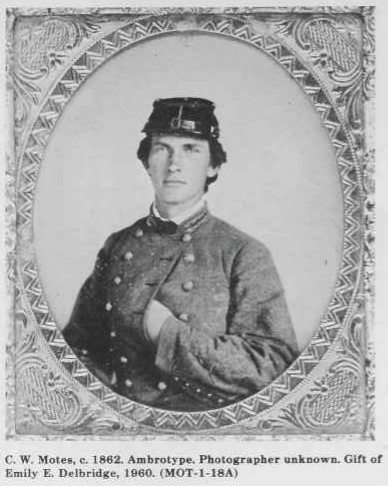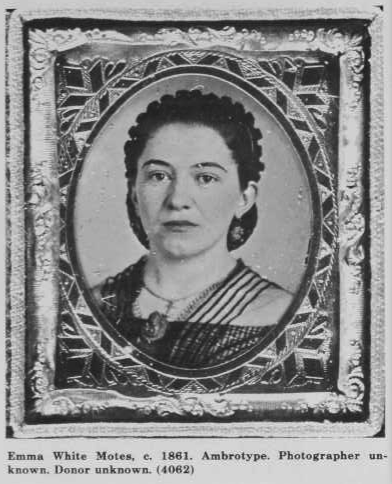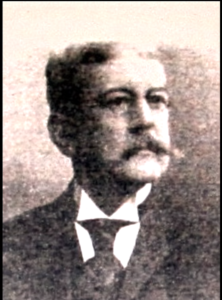Kentucky Confederates at Sharpsburg
28 May 2012
AotW Member Greg Walden has contributed the first new Featured Article for Antietam on the Web in many moons. It’s a fascinating look at a small unit from Kentucky without a home until it joined forces with volunteer companies from Arkansas passing through Nashville on their way to Virginia in June 1861.
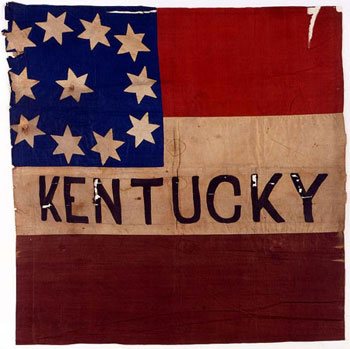
Confederate First National Flag (c. 1861, Museum of the Confederacy via G. Walden)
Greg introduces the subject by saying that [m]ost of the Southern states were represented by units in the Army of Northern Virginia at Sharpsburg, but Kentucky is not usually thought of as one of them. However, a Kentucky unit was present at Sharpsburg; the only outfit from that state in Lee’s army.
He explores the origins and personalities of the unit and their role in action with the 3rd Arkansas Infantry at Sharpsburg on 17 September 1862.
I invite you to enjoy Kentuckians in Lee’s Army at Sharpsburg: The Blackburn Guards now online in the Articles & Exhibits section of Antietam on the Web. Thanks Greg!
The Liljenquist photographs and Sharpsburg
31 December 2010
I have been busy with the business of life, but not entirely ignorant of the world outside! I certainly noticed the October 2010 announcement of the incredible generosity of the Liljenquist family who donated their collection of more than 700 Civil War ambrotypes and tintypes to the Library of Congress. The Library is creating a physical exhibit for them opening in April 2011 as part of the Sesquicentennial observations.
In the meantime, they’ve scanned and posted the collection online on their own pages and through a Flickr photostream. I’ve explored this treasure a little, and found some intriguing images with connections to our favorite battlefield.
![[Unidentified woman wearing mourning brooch and displaying framed image of unidentifed soldier] (LOC)](https://live.staticflickr.com/5201/5228622401_284617d66c.jpg)
Woman wearing mourning brooch and displaying framed image of soldier (1861 – 1865, Library of Congress via Flickr)
I’m sorry that so few of the subjects of these pictures are identified. Only a couple of dozen are named, another dozen or so are identified by military unit from clues on their uniforms or in the photo background. The remaining hundreds are unidentified.
I am moved all the more, however, by the anonymity of this woman in her grief. I presume from the context that the soldier in her lap has recently been killed. Her husband? It reminds me again of the deadly way the War ripped through families and brings perspective to battle maps, memorials and markers …
Sharpsburg vet’s house to move
9 March 2007
The Henry Daily Herald reports Col C.T. Zachry‘s last home, a house in McDonough, Georgia, will be relocated to serve as visitor’s center or museum at the Nash Farm site.
Zachry was Lieutenant Colonel of the 27th Georgia Infantry at Sharpsburg, where he succeeded to command of the regiment when Colonel Smith was killed in action.
The Nash Farm is noted as the site of the last action of the Atlanta Campaign of 1864.
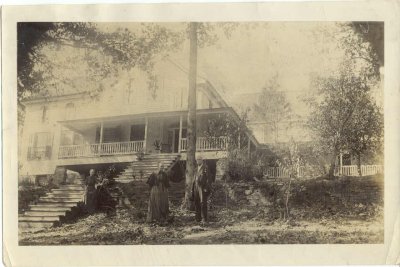

Col Zachry before his next-to-last house, “Peachstone”, Henry County, GA
(photo from g-g-grandson Posey B. Howell)
Captain Morrison’s red day at Sharpsburg
30 December 2006
In a December 1905 piece in the Richmond Times-Dispatch, Senator John W. Daniel, introducing Emmett M. Morrison’s memoir of the Battle of Sharpsburg, wrote
… In many a nook and cranny in Virginia, too, is a valiant leader of his neighbors, who commanded and guided them in the battle shock, and stepped behind the scenes to the work of restoration when war’s dread thunders stormed no more.
One of these is Colonel E. M. Morrison, of the 15th Virginia Infantry, who now resides at Smithfield, in the Isle of Wight County, and who is yet busy with his tasks.
The 15th Virginia lost at Sharpsburg 58 per cent. of its men, which is 23 per cent. more than the Light Cavalry Brigade of the English army, lost in the world-heralded “Battle of Balaklava.” Our folks write poems in honor of the Light Brigade and our schoolboys declaim Tennyson’s verses; but what do we know of our own boys who stood proof on this red day at Sharpsburg?


Lt. Colonel Emmett Masalon Morrison (c. 1863-65)
At Antietam on the Web we’ve made it our mission to remember some of those ‘boys’, like Emmett Morrison, who indeed stood proof …
Lt Col Lawrence H Scruggs (1862)
9 April 2024
Here’s Lawrence Houston Scruggs in a photograph taken in October 1862 after he’d been promoted to Lieutenant Colonel of his regiment, the 4th Alabama Infantry.
He enlisted as a Private in his hometown of Huntsville in May 1861, and was successively promoted to Sergeant, Lieutenant, and Captain by September of that year. He commanded the regiment in combat at Sharpsburg on 17 September 1862 as senior officer still standing until he was wounded there in the East Woods about 8 am.
Very shortly afterward, on 30 September, he was promoted to Major and just two days later, Lieutenant Colonel. He was afterward in command of the 4th Alabama to their surrender at Appomattox in April 1865.
His photograph is in the Alabama Archives.
Maryes in Maryland
8 April 2024
Here’s Lieutenant Edward A. Marye‘s (probably pronounced “Mary”) family home in Fredericksburg, VA as it looked in May 1864, then in use as a Union military hospital for troops wounded during the battle of the Wilderness.
First Lieutenant E.A. Marye (1862)
His father John Lawrence Marye (1798-1868), a successful lawyer and mill owner, bought land and a small house on a hill overlooking Fredericksburg in about 1824. He improved the house and named it Brompton, after the Middlesex village in England from which his Hugenot-Norman great-grandfather Rev. James Marye (or Jacques Marie, 1692-1768) came to America in about 1730.
The high ground around it became known as Marye’s Heights – now famous for the combat there in December 1862.
Lt. Edward Marye commanded a section of 2 3-inch Ordnance rifles of the Fredericksburg Artillery (Brig. Gen. A.P. Hill’s Division) at Harpers Ferry (14-16 September) and Shepherdstown (19 September), and led the battery at least part of the day at Sharpsburg (17 September) while Captain Carter M Braxton acted as Hill’s chief of artillery.
But there were also 4 other Maryes in the battery …
Private Alfred James Marye, Edward’s nephew, was on the Maryland Campaign and was wounded by counter-battery fire at Boteler’s Ford on the Potomac on 19 September. He was barely 16 years old. He served with the battery to the end of the war and was afterward a railroad clerk in Montgomery County, VA.
Private Alexander Stuart Marye (1841-1915), a younger brother of Edward’s, enlisted in the battery in June 1862 and was probably in Maryland in September. He was on detail away from his unit on ordnance and administrative duties for most of the rest of the war and was surrendered and paroled at Greensboro, NC in May 1865.
John Lawrence Marye, Jr. (1823-1902), also Edward’s brother, enlisted as a Private in April 1861 and was promoted to 5th Sergeant in April 1862. He was absent, sick into October 1862, so probably not in Maryland, but was surrendered and paroled with the battery at Appomattox Court House, VA on 9 April 1865. During the war he also served in the Virginia House of Delegates (1863-65). He’d been a wealthy lawyer and farmer in his own right before the war, and Mayor of Fredericksburg in 1853-54. He was afterward again a Delegate (to 1868) and Lieutenant Governor of Virginia (1870-74).
Another of Edward’s nephews, his oldest brother James’ son Private William Nelson Marye (1841-1929) enlisted in Braxton’s Mounted Artillery (later Fredericksburg Light) on 12 May 1861, but was detached from his unit for much of 1862 and probably not with them in Maryland. He was with the battery from March 1863 to September 1864, when he was again detailed, as a clerk to a military court for the 3rd Army Corps, but was back by Appomattox in April 1865.
To complete Edward’s story: he was promoted to Captain and it became his battery in March 1863, but he did not survive the war; he died of disease in Petersburg, VA in October 1864.
Notes
The photograph above of the Marye house “Brompton” is from the Library of Congress.
Details about Brompton from its National Register of Historic Places nomination form [pdf]. The home was acquired by Mary Washington College (now University) in 1947 and it is now their president’s residence.
Lieutenant Edward Marye’s picture here is an ambrotype in the collection of the American Civil War Museum, Richmond.
The Maryes’ military records are found in the US War Department’s Compiled Service Records of Confederate Soldiers, Record Group No. 109, Washington DC: US National Archives and Records Administration (NARA).
This scrap of paper documents the issue of artillery ammunition on 15 September 1862 by Captain Edwin Taliaferro, Ordnance Officer on Major General Lafayette McLaws’ staff, to 2nd Lieutenant George J Newton of the Troup (GA) Artillery, also a subject of the previous post. Newton and his battery were among McLaws’ Division Artillery on the Maryland Campaign.
This was obviously hastily written – both men were certainly very busy that day. It took me a minute to decipher that scrawl enough to tell what type of rounds they were: I think it reads “128 Rounds Parrot Ammunition.” The Troup artillery was equipped with 2 smooth-bore guns and 2 10-pounder Parrot rifles on the Maryland Campaign of 1862.
I found this document among Lieutenant Newton’s Consolidated Service Records (CSR) in the National Archives; my copy online via fold3.
By way of evidence that the handwriting above is Captain Taliaferro’s, here’s a requisition of his dated 18 September, the day after the great and terrible fight at Sharpsburg, requesting Parrott shell and 3-inch rifle shell rounds “immediately needed for the supply of this command (McLaws’ Division) as none remain on hand.” Desperate times.
This paper is from Taliaferro’s CSR jacket, as are hundreds of similar documents and correspondence concerning issue of and accounting for ordnance stores during his service as an ordnance officer from 1862 into 1865.
Lt Columbus W. Motes, his horse, &etc
2 April 2024
A 25 year old professional photographer from Athens, GA, Columbus Washington Motes was First Lieutenant and commanded a section – two rifled guns – of the Troup (Georgia) Artillery on the Maryland Campaign of 1862. On 14 September he helped muscle his guns to the crest of Elk Ridge then down the ridge to Maryland Heights overlooking Harpers Ferry, where they contributed to the bombardment of the Federal positions in and around the town. The garrison surrendered the next day.
He fought his guns again near the Dunker Church at Sharpsburg on the 17th. He was seriously wounded there, at first refusing to leave the field. As his Captain Henry H. Carlton later remembered it:
[H]e came to me, his arm dangling by his side, and covered with blood and said: “Captain Carlton, what do you think? The yankees have shot me!” I ordered him to the rear, but he returned to his post, and in a few moments I heard: “Captain Carlton, the yankees have shot me again!” This time he was badly wounded in the hip, and was borne to the rear on a caisson.
He had recovered and returned to duty by the end of the year, and on 3 January 1863 the other three officers of the battery, Captain Carlton and Lieutenants Jennings and Newton constituted a Board of Survey and Appointment “to assess the value of a horse belonging to Lt Motes which was killed in action @Sharpsburg Md Sept. 17th, 1862.”
The findings of the Board (they filled in “Two Hundred” as the amount, which is hard to read) as approved by brigade commander Wofford:
He did collect the $200 for his horse, late in 1863, by which time good horses were worth as much as 10 times that amount. I do not know what he paid for a replacement.
Lieutenant Motes was probably carrying this image of his sweetheart in Maryland, as he apparently did through the war:
She’s Emily F “Emma” White, also of Athens. Motes was briefly married before the war and had a daughter born in 1857, but his wife died by 1861. He married Emma shortly after the war, in 1866, and they spent most of the rest of their lives making photographs in Atlanta.
Notes
Thanks to Jim Rosebrock for the pointer to Lieutenant Motes in his excellent book Artillery of Antietam (2023), published by the Antietam Institute, which got me started on the Lieutenant.
The Carlton quote above is from the Atlanta Constitution of 11 May 1890, when Carlton was US Congressman from Georgia.
The findings of the Board of officers is from Motes’ Compiled Service Record jacket at the National Archives; I found it online from fold3.
The ambrotypes of Columbus and Emma, above, are from the Atlanta Historical Society’s Journal of Summer, 1981. The text accompanying them on pages 42 and 43 reads:
C.W. Motes (1837-1919) and Emma White Motes (c.1830- c.1890)
” . . . a small red morocco case, containing a Collodion portrait ofthe girl he left behind him, was valued by him above gold and precious stones.” Written in 1855 to describe a soldier of the Crimea and the photograph he carried with him, this quotation could as easily have been ascribed to soldiers of the American Civil War and the photographs of loved ones that they carried. Columbus W. Motes of Athens, Georgia, a first lieutenant, then captain [sic], with the Troup County Artillery, carried a small ninth-plate ambrotype with him throughout the war. “Presented by Miss Emma White, 1861,” the photograph carries with it the almost traditional tale of having halted bullets intended for its bearer. Miss White’s ambrotype survived the war in excellent condition and was brought to Atlanta one decade later by the captain and Emma, who were married in 1866.
While in Athens, Motes, an artist, had begun the business of photography with a man named White, possibly Emma’s brother or father. The photographs reproduced here may have been taken in Athens. It was the photography business that C.W. Motes continued, probably with Emma’s help, in Atlanta in 1872 in a gallery on Whitehall Street, “a favorite resort with lovers of art.” One Atlanta newspaper account written soon after the Moteses’ arrival posed the question of “the real” versus “the ideal” when advising its readers, “whether comely or homely,” to call on Captain Motes, who could “make a very homely face look passable.”
In the 1880s, Motes was awarded a bronze medal in a New York competition for photographs created through a short-lived photographic process called the “chromatype.” He was also known for his photographic sculpture using people posed in well-known scenes from literature and mythology. In 1895 Motes won additional prizes for his photographs exhibited at the Cotton States and International Exposition. Before his death in 1919, he had become one of the city’s most popular portrait photographers. Doing a brisk business until 1907, the Motes gallery survived fire, changes in the public’s taste, and changes in photographic processes to become one of Atlanta’s most successful photography shops.
Charles Urquhart Williams (c. 1875)
15 January 2024
Charles Urquhart Williams was a staff officer to Brigadier General David R Jones at Sharpsburg in 1862 and after Jones’ death in January 1863 was with Brigadier General Montgomery D Corse. He was captured near Petersburg in mid-1864 and was a prisoner to the end of the war.
He was afterward a prominent lawyer in Richmond, VA, where this photograph was probably taken, possibly on the occasion of his service in the Virginia Legislature (1875-77). Thanks to g-g-g-grandson Jerrold Johnson for sending me this copy.
Catherine Amanda Martin & Nicholas Lowe Broadwater (c. 1868)
1 January 2024
Their great-great-grandson Phil McLane sent me this lovely photograph of Catherine and Nicholas Broadwater, who married in 1868. Nicholas was a Private in the 7th South Carolina Infantry when he was wounded at Sharpsburg in September 1862. He survived the war to return to farming in Edgefield County, SC for the rest of his life.





